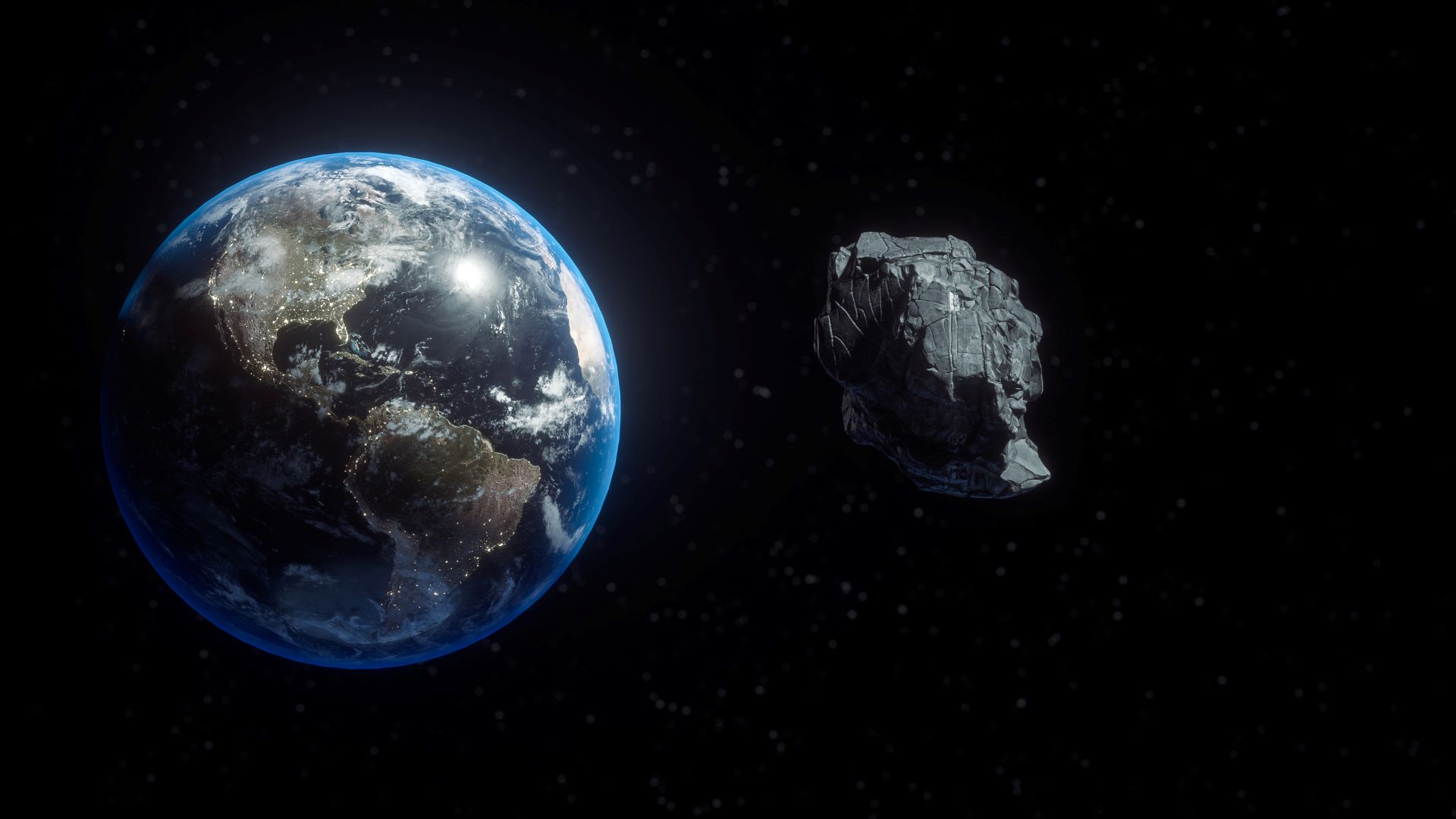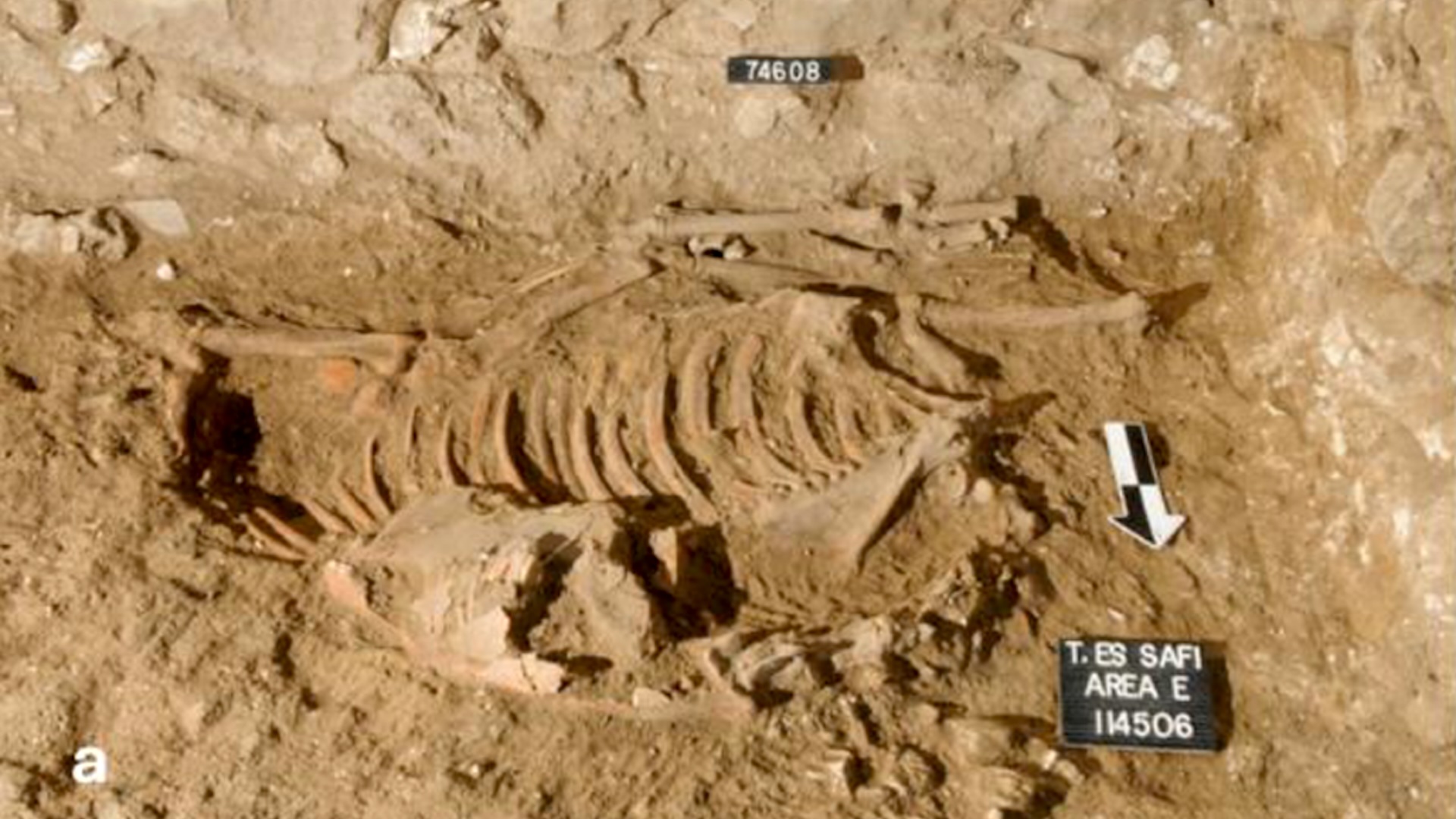Asteroid the size of the Great Pyramid of Giza to fly (safely) by Earth Sunday

An asteroid about as long as the Great Pyramid of Giza is tall will make a "close" approach with Earth on Sunday (July 25), according to NASA calculations.
There is no worry that the space rock poses any threat to Earth, but NASA monitors such rocks to both learn more about the early solar system — asteroids are rocky fragments from that time — and because if their orbits were to change, the asteroid could pose a future risk to Earth.
Related: Top 10 ways to destroy Earth
On its closest approach, the near-Earth asteroid, called 2008 GO20, will swing within 2.8 million miles (4.5 million kilometers) of our blue marble. It will be trekking at a whopping 18,000 mph (nearly 29,000 km/h), according to news reports.
The rock is estimated to be anywhere from 318 to 720 feet (97 to 220 meters) across. (The Great Pyramid of Giza stands at 450 feet, or 138 m, tall.) Any space rock larger than about 490 feet (150 m) across that is expected to make a shave with Earth within 4.6 million miles (7.5 million km) is considered a potentially hazardous asteroid (PHA); NASA's Center for Near Earth Object Studies monitors all PHAs. For comparison, that distance is 19.5 times the span between Earth and the moon.
And in reality, that distance doesn't hold a candle to the closest known flyby by an asteroid (at least one that didn't smash into us), which occurred on Aug. 16, 2020, when 2020 QG zipped just 1,830 miles (2,950 kilometers) above the Indian Ocean, Live Science sister site Space.com reported. Such little space rocks pose no danger to life on Earth.
On the other hand, 2008 GO20 is "potentially hazardous" because over time the gravitational tug of the planets could change the object's orbital path so that it crosses Earth's orbit. If that were to happen, a future collision with our planet is possible, NASA said.
Get the world’s most fascinating discoveries delivered straight to your inbox.
This isn't the first time 2008 GO20 has visited Earth's quarters. It made its closest approach on Aug. 4, 1901, when the asteroid swung to 806,856 miles (1.3 million km) of our planet, according to NASA records. Its next closest flyby happened on July 31, 1935 at a distance of 1.15 million miles (1.85 million km) of Earth. When it next flies by Earth, on July 24, 20342008 GO20 will get as close as 3.1 million miles (5 million km).
Originally published on Live Science.
Jeanna Bryner is managing editor of Scientific American. Previously she was editor in chief of Live Science and, prior to that, an editor at Scholastic's Science World magazine. Bryner has an English degree from Salisbury University, a master's degree in biogeochemistry and environmental sciences from the University of Maryland and a graduate science journalism degree from New York University. She has worked as a biologist in Florida, where she monitored wetlands and did field surveys for endangered species, including the gorgeous Florida Scrub Jay. She also received an ocean sciences journalism fellowship from the Woods Hole Oceanographic Institution. She is a firm believer that science is for everyone and that just about everything can be viewed through the lens of science.
